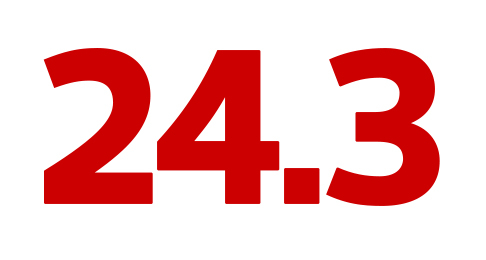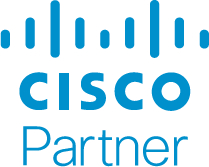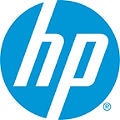What will the year hold for networking projects, and what does it mean for enterprises?
With end users creating, sending and receiving more data than ever before, the speed and reliability of the enterprise network is crucial to organizational success. As older equipment ages out — and as enterprises look to add new functionality — many organizations are planning to upgrade their existing networks or add new networking technologies over the course of the next 12 months.
In a survey of more than 500 IT decision-makers, CDW asked where organizations plan to invest their networking dollars in 2016. The results show that a number of organizations are adopting next-generation solutions, such as cloud, software-defined networking (SDN) and the Internet of Things (IoT), but that hardware remains a top priority.
Overview
In September 2015, 382 respondents from the CDW Advisory Board (CAB) completed an 18-question survey that asked about the network infrastructure changes their organization planned to make over the next year. Between January and June 2015, 169 attendees at CDW networking events also completed the survey, for a total of 551 respondents. The data included feedback from IT decision-makers at public-sector organizations; small, midsize and large businesses; and from the CAB group. It also included a separate category for the event respondents.
The survey found that 55 percent of organizations planned to make network infrastructure changes within the next year. Among these organizations, 60 percent classified their changes as tactical upgrades, while 23 percent said they were merely performing minor maintenance. Only 15 percent said they planned to undertake a major transformation.
"What is driving some of that refresh is that the data center is changing and evolving," says Rita Younger, national practice lead for ACI and SDN at CDW. "One big topic right now is software-defined networking. People are refreshing their hardware in the present. But when they do, they're making sure that the hardware they purchase is suitable for future use cases."
Routers and Switches
Backbone hardware will remain the top priority in 2016 — at least when it comes to network spending. By far, routers and switches lead the list of network technologies that organizations say they will upgrade in the next year. Among organizations that are making any networking changes in the next 12 months, 77 percent say they will increase their investment in routers and switches.
"Routers and switches are absolutely required," Younger says, explaining why the hardware comes out on top of most organizations' priority lists. "That's the plumbing."
For the majority of organizations (57 percent), investments in routers and switches over the next year are classified as "tactical upgrades," while a quarter of companies (25 percent) are performing "minor maintenance." Only 16 percent of organizations classified their new investments as a "major transformation."
Younger says that many organizations' purchases will be informed by a desire to accommodate "east-west" traffic within the data center, more so than "north-south" traffic in and out of the data center.
Nearly one-third (31 percent) of respondents making changes in the next year indicated that they would seek out third-party help or managed services related to routers and switches. This number was slightly higher for the event respondents (35 percent), midsize and large businesses (32 percent) and small business (32 percent) than for public-sector organizations (26 percent).
While 31 percent may seem low, it is important to remember that this is the percentage of all organizations making any networking investments over the next year — including those that aren't investing in routers and switches. More organizations will seek help with routers and switches over the next year than with any other networking technology, according to the survey.
Some respondents said they did not plan to seek outside help because they employ adequately trained staff in-house. "We have skilled subject matter experts to perform these tasks," said an IT manager at an organization in the banking and finance field. "In general, this technology is not too complex."
Some respondents didn't want to feel as though they were giving up control over their networks. "My team and I are control freaks and are capable of performing the work," said an IT director at a government agency.
However, other respondents said they needed help determining the right products for their organization and implementing and configuring the hardware. "A third-party vendor knows more about the product and can help us design," said an IT staff engineer at a large retail organization. One IT director at a small manufacturing company simply said, "I can play the piano, but I can't tune it."
Younger says that a number of organizations need help redesigning their data centers in a leaf-spine model to accommodate east-west traffic. Many enterprises also ask for help in selecting the right equipment and future-proofing their networks, she says.
"We're educating clients about how things are changing in technology," Younger says. "Most of them are so busy with day-to-day troubleshooting that they need help understanding changes that are coming."
Purchases will be motivated by a desire to accommodate "east-west" traffic within the data center, more so than "north-south" traffic in and out of the data center.
Mobility’s Effect on Network Demand
The increase in mobile devices is leading to an explosion in data needs, as these statistics show:
SOURCE: Cisco Systems, "Cisco Visual Network Index: Forecast and Methodology, 2014-2019," May 2015
Wireless
After switches and routers, wireless networking is the area set to see the most investment in 2016, with more than half (54 percent) of organizations with planned changes saying they will increase wireless spending. The event respondents were especially interested in wireless, with 76 percent planning to increase spending, followed by public-sector enterprises (58 percent), midsize and large organizations (57 percent) and small businesses (48 percent).
"Wireless is no longer a want," says Younger. "It's a need. Employees expect wireless, and it needs to be continually refreshed. Consider how many people are streaming video on a regular basis and the amount of bandwidth that takes up. Continuing to refresh your access points is very important."
More and more, organizations upgrading their wireless infrastructure are looking to access points that are compatible with 802.11ac, the latest wireless connectivity standard. Younger says that, until now, a number of organizations have been opting for access points that meet 802.11n, the previous standard. But 2016, she predicts, will be a "tipping point," as the new standard becomes increasingly common. New mobile devices, she notes, are compatible with the 802.11ac standard, but enterprises can take advantage of the increased performance only if they also upgrade their hardware to meet the standard.
About half of companies making wireless investments will seek outside help with their deployments. Among those that do not plan to work with a partner, some respondents said their deployments simply wouldn't be very complicated. "The company has only three wireless access points, and they're easy to set up," said an IT manager at a small insurance company. Others who plan to seek help cited more complex deployments and physical hurdles. "The wireless access points need to be installed in our production area, and I'm not certified to use lift equipment to reach the ceiling," said an IT staff engineer at a manufacturing company.
WAN and Application Optimization
Among organizations making network changes in the next year, nearly two in five (38 percent) will increase their investment in WAN and application optimization. This will include tools such as WAN optimization controllers that are designed to improve connection performance within a wide area network, without increasing the size of the Internet pipe. Application optimization tools include solutions such as load balancers that manage traffic in order to improve application performance.
Notably, well over half of organizations making investments in WAN and application optimization tools plan to seek the assistance of a third-party partner. Younger says that, even in organizations with experienced IT staffers, managers will often seek outside help with solutions such as WAN and application optimization. This is simply because even knowledgeable staff may lack the day-to-day, hands-on experience with these tools that they have with more common network components such as routers and switches.
"These solutions may be completely new to an organization," Younger says. "Or, even if it's a refresh, they may have most recently purchased a tool like a load balancer four years ago, and there are going to be a lot of new features, a lot of changes."
Next-Generation Technologies
In 2016, many organizations will continue to research and make investments in cloud resources, and more than a few will begin to explore cutting-edge technologies such as software-defined networking and IoT.
Among respondents who said they would be making changes in the next year, nearly half (45 percent) indicated that they would at least research cloud computing, while 15 percent said the same thing about IoT technologies. Meanwhile, 21 percent of these respondents said they would look into SDN, and 15 percent said they would increase their investment in that area over the coming year.
The benefits of moving services such as software and infrastructure to the cloud — including scalability and potential cost savings — are widely known at this point, and Younger says she expects that additional organizations will make the move in 2016. Enterprises that are still using on-premises email, for example, may move to hosted email as their on-premises equipment ages out, she says.
SDN, when combined with network orchestration, will allow organizations to reap the same flexibility benefits that the public cloud offers, while keeping resources in house and offering additional cost savings. "This gives us the ability to instantly provide servers to internal customers," Younger says. "That same service that we could get from a cloud-based provider, we can now do that in our own data centers. That was not completely possible until SDN. The products are all really new, within the last year."
One company was able to achieve a return on investment of more than 400 percent in less than a year by pulling its public cloud resources back into its own data center and using SDN. "If you look at some of the research, it's much less expensive to operate in a private cloud environment," she says. "Software-defined networking is definitely taking off in 2016. I'm on phone calls daily with customers who are interested."
As IoT solutions mature, Younger says, she expects more organizations to begin to explore use cases. Industrial and manufacturing companies are particularly interested in IoT, but she is also seeing interest from enterprises in the retail and healthcare sectors. "Internet of Things is going to grow, definitely," Younger says. "The train has left the station. It's not going to be adopted by everyone, but it's definitely picking up momentum."
*SOURCE: CDW, "Surveying Your Network: Marketing Solutions 2015"
One company was able to achieve a return on investment of more than 400 percent in less than a year by pulling its public cloud resources back into its own data center and using SDN.
Pushing Cable Beyond 1 Gigabit
In the fall of 2014, industry leaders including Cisco Systems and Freescale announced the formation of the NBASE-T Alliance, a cooperative effort to promote the development of 2.5Gb and 5Gb Ethernet technology for enterprise network infrastructure.
The NBASE-T standard can boost the speed of twisted-pair copper cabling beyond the designed limits of 1Gb per second, helping enterprises grow their capacity without the time and expense of replacing their copper wire with fiber.
This option may help enterprises cope with new traffic expected to come with increased mobile use, cloud computing and emerging technologies such as the Internet of Things.
To learn more read our white paper, The Gigabit Upgrade: NBASE-T Technology.
CDW: A Network Partner that Gets IT
CDW's solution architects understand how to fully optimize a network — wired or wireless, local or wide area — and have the expertise necessary to help organizations improve performance, security and resiliency. CDW takes a comprehensive approach to identifying and meeting the needs of every customer.
To learn more about CDW's network solutions, contact your CDW account manager at 800.800.4239.
Partners
CDW partners with the best technology companies on Earth to provide you solutions that fit your specific needs and services that work, no matter the industry.
Cisco network management products can optimize network and application performance for enterprise networks with over 500 globally or regionally distributed users in multiple branch offices. Designed to increase network efficiency and availability, Cisco network management products are valuable tools for reaching business and productivity goals.
Experience breakthrough network management and maximum availability with Brocade Fabric technology. Innovative monitoring, management and diagnostics across Fibre Channel and IP networks help administrators avoid performance issues before they impact operations. With intuitive reporting and trend analysis, maintaining network health and meeting service level agreements is easy.
Networks are essential to business-critical processes. Their tendency to expand in both size and complexity affects network availability and performance. HP provides a fully integrated and automated solution that optimizes fault management and ensures availability, unifies fault and performance management and automates IT processes.








